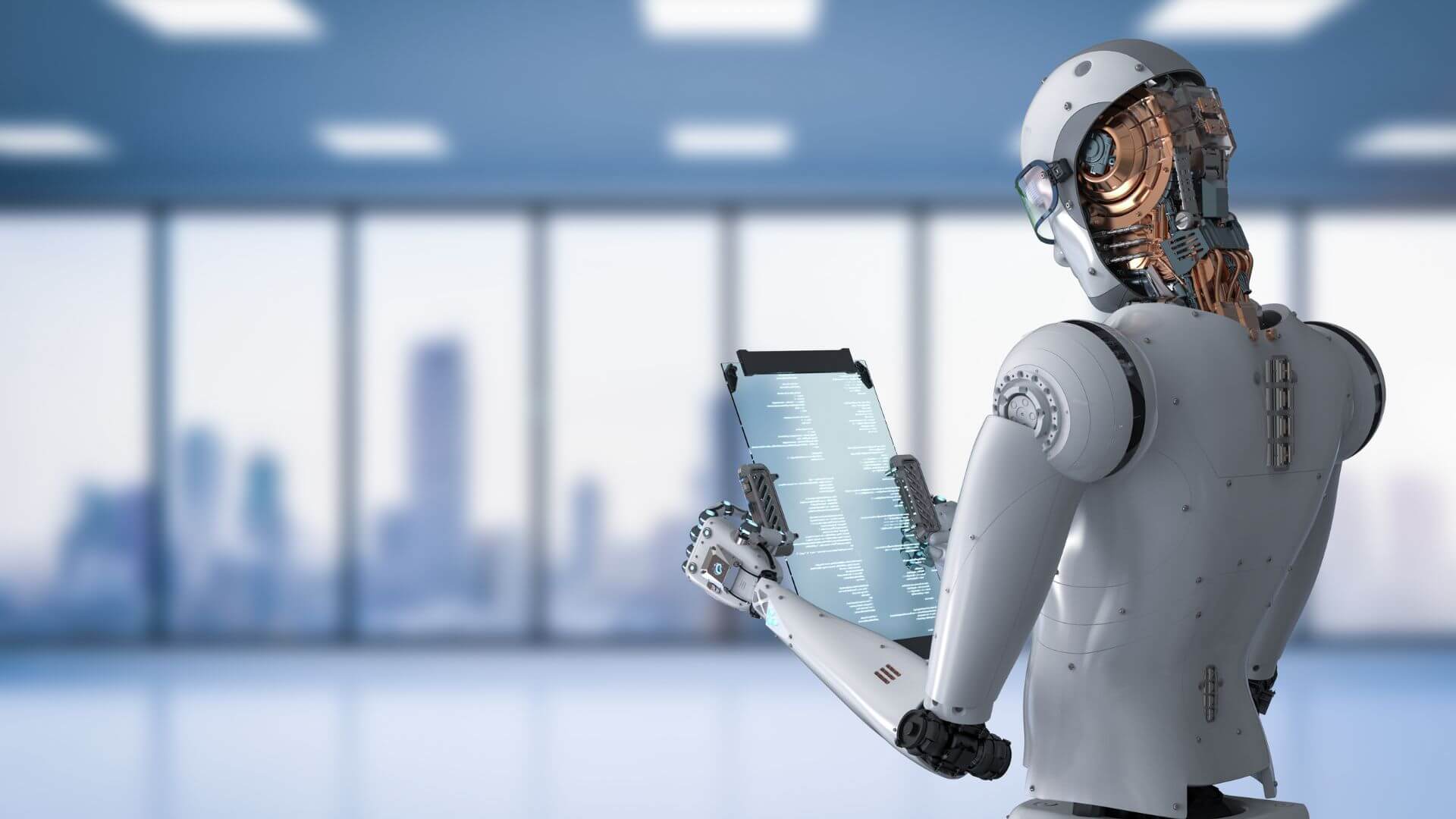Table of Contents
Artificial Intelligence has revolutionized language translation, providing tremendous benefits such as real-time communication across the globe and scalable solutions for massive text volumes. It democratizes information access and is continually improving in understanding context and nuances. However, AI struggles with idiomatic expressions, sarcasm, and cultural subtleties. Human translators’ expertise remains essential, particularly in specialized fields, ensuring accuracy and cultural sensitivity. The future looks promising with evolving algorithms and personalized translations. Embrace the balance between AI efficiency and human touch to harness even greater possibilities in the world of language translation. Discover more about the exciting potential of AI in translation ahead.
Advantages of AI Translation
One of the primary advantages of AI translation is its ability to provide real-time language conversion, facilitating instant communication across diverse linguistic groups. Imagine conversing with someone from a different country without the barrier of language—AI makes this possible. This capability is particularly beneficial in global business meetings, international travel, and online interactions where quick and accurate translation is essential.
Moreover, AI translation tools are constantly evolving, becoming more adept at understanding nuances and context, which are often challenging for traditional translation methods. This means that users can trust AI to deliver more accurate and culturally relevant translations. Additionally, AI translation is highly scalable. Whether translating a single sentence or an entire document, AI can handle large volumes of text quickly and efficiently, which is a significant time-saver for individuals and organizations alike.
Furthermore, AI translation democratizes access to information. Educational resources, news articles, and online content can be made accessible to non-native speakers, fostering inclusivity and global understanding. Isn’t it remarkable how technology can bring the world closer together? Embracing AI translation not only bridges communication gaps but also enriches our global interactions, making it a powerful tool in today’s interconnected world.
Challenges in AI Translation
While AI has revolutionized language translation, it faces notable challenges that impact its effectiveness. How can an algorithm truly grasp the nuanced context of a conversation or the cultural subtleties embedded in language? These limitations, along with instances of ambiguity and misinterpretation, highlight areas where AI still has room for improvement.
Contextual Understanding Limitations
A primary challenge in AI translation is the technology’s difficulty in accurately interpreting and maintaining contextual nuances. While AI systems have made significant strides in understanding basic language structures, they often struggle with more sophisticated aspects, such as idiomatic expressions, sarcasm, and polysemous words (words with multiple meanings). For instance, the word ‘bank’ can refer to a financial institution or the side of a river, and understanding which meaning to apply relies heavily on context.
AI translation tools, such as Google Translate, use algorithms to process and translate text, but these algorithms are not essential. They often rely on statistical models and large datasets, which may not always capture the subtlety of human language. This can lead to misunderstandings, especially in professional or academic settings where precision is paramount.
Improving the contextual understanding of AI translation requires ongoing research and development. It is vital for programmers and linguists to work together, refining algorithms to better mimic human language comprehension. Despite these challenges, the potential benefits of AI translation are immense. By advancing contextual capabilities, we can move closer to a future where language barriers no longer impede global communication.
Cultural Nuances Ignored
Many AI translation systems fall short in accurately conveying cultural nuances, leading to potential misinterpretations and communication barriers. Essentially, translating words is not sufficient; understanding the cultural context behind those words is vital. For example, idiomatic expressions, humor, and cultural references often get lost in translation, resulting in phrases that may sound awkward or nonsensical in the target language.
Take, for instance, the English phrase ‘break a leg,’ which is a way to wish someone good luck. A direct translation into another language might confuse or even offend the audience if the cultural context is not taken into account. Such challenges highlight the importance of cultural sensitivity in translation work.
The limitations of AI in handling these subtleties can lead to misunderstandings, especially in fields such as legal documentation, medical information, or international business communications. Therefore, while AI offers remarkable efficiency, it cannot yet fully replace the human touch required to navigate these cultural intricacies.
To address these challenges, developers and linguists must collaborate to train AI models better, incorporating diverse cultural contexts. This collaboration can help bridge the gap, making technology more adept at understanding and conveying the richness of human communication.
Ambiguity and Misinterpretations
Ambiguity and misinterpretations remain significant challenges in AI translation, often arising from the complexities of language structure and context. Unlike human translators, AI lacks the innate ability to discern nuances and subtleties embedded in speech. For instance, the same word can have multiple meanings depending on the surrounding text, making it difficult for AI to choose the correct interpretation without additional context.
Imagine you are reading a translated work where the phrase ‘time flies’ is rendered literally rather than idiomatically. The result could be confusing or even humorous, but it illustrates a serious limitation: AI struggles with idiomatic expressions and cultural references. This complexity is compounded when dealing with languages that have flexible syntactic structures or polysemous words—those with multiple meanings.
However, it is important to recognize that these challenges are not insurmountable. With ongoing advancements in natural language processing (NLP) and machine learning, AI is continually improving. Researchers are developing algorithms that better understand context and disambiguate meaning, working towards making AI translations more accurate and reliable. So, while ambiguity and misinterpretations present obstacles today, the future holds promising solutions to enhance AI’s linguistic capabilities.
Impact on Human Translators
The advent of AI in language translation has stirred significant changes in the job market, posing both challenges and opportunities for human translators. While AI can handle large volumes of translation work quickly, it often struggles with nuanced language, underscoring the enduring value of human expertise. As the industry evolves, translators are encouraged to adapt by focusing on higher-level tasks that require cultural understanding and advanced linguistic skills.
Job Market Disruption
Advancements in AI-driven language translation are posing significant challenges to the job security of professional human translators. This technological leap is reshaping the job market, raising concerns and opportunities alike. While AI tools can translate text quickly and cost-effectively, the shift leaves many translators questioning their future roles. Are they becoming obsolete, or will their skills still be in demand?
Despite these fears, there is a silver lining. Human translators possess cultural insights and nuanced understanding that AI cannot replicate. Although machines excel at translating large volumes of text, they often miss subtleties such as idioms, context, and cultural references. Human expertise remains invaluable in specialized fields like literature, legal documents, and international diplomacy.
To stay relevant, translators can adapt by focusing on areas where human input is indispensable. Enhancing skills in post-editing machine translations or specializing in niche markets can provide new career avenues. Embracing continuous learning and technological proficiency will also be key.
In this evolving landscape, human translators can find ways to complement AI rather than compete with it. By leveraging their unique strengths, they can carve out a sustainable and fulfilling career path.
Quality Versus Quantity
Balancing quality and quantity in language translation reveals the inherent strengths and limitations of both AI tools and human translators. AI-driven translation systems, such as Google Translate, excel in processing vast amounts of text quickly, making them indispensable for tasks that require speed and efficiency. However, these tools often struggle with nuanced language, cultural references, and context-specific meanings, which are vital for producing high-quality translations.
Human translators, on the other hand, bring an unmatched depth of understanding to their work. They can interpret idioms, tone, and subtleties that AI may overlook, ensuring that the translated text retains its intended meaning and emotional impact. This level of quality is especially important in fields like literature, legal documents, and marketing, where accuracy and cultural sensitivity are paramount.
While AI can handle a high volume of translations faster than any human, it lacks the finesse that a skilled translator provides. So, what is the best path forward? Embracing a hybrid approach that leverages AI for initial drafts and human expertise for refinement could offer the best of both worlds. This synergy between technology and human talent can elevate the overall standard of language translation, benefiting all users.
Evolving Translator Roles
As AI technologies become more integrated into the translation process, the roles of human translators are shifting to emphasize higher-level linguistic skills and quality assurance. Rather than focusing solely on direct translation, human translators are increasingly taking on responsibilities such as post-editing AI-generated translations, guaranteeing cultural nuances are maintained, and managing context-specific terminology. This shift allows translators to utilize their deep understanding of languages to enhance the precision and cultural relevance of translations.
Why is this change important? AI may provide rapid translations, but it often lacks the subtlety and contextual awareness that only a human can offer. Translators now act as overseers, refining machine outputs to make sure they meet high standards. This evolution in roles not only safeguards the integrity of translated content but also opens up new career opportunities in the growing field of translation technology.
Imagine a future where human translators and AI work together seamlessly. By blending AI’s speed with human expertise, the translation industry can achieve unprecedented levels of accuracy and efficiency. So, while AI continues to revolutionize the field, the human touch remains indispensable, proving that technology and human skill can indeed coexist harmoniously.
Accuracy and Reliability
The accuracy and reliability of AI-driven language translation are critical factors that determine its effectiveness and user trust. These elements are essential to guaranteeing that translations are not only correct but also convey the intended meaning. High accuracy means fewer mistakes, while reliability ensures consistent performance.
To illustrate, let’s break down the aspects of accuracy and reliability in AI translation:
| Aspect | Description |
|---|---|
| Linguistic Precision | How accurately the AI translates words and phrases. |
| Context Awareness | The ability of AI to understand and translate context, not just individual words. |
| Consistency | The uniformity of translations across different texts and instances. |
| Error Rate | The frequency of mistakes or inaccuracies in the translation process. |
AI translation tools, such as Google Translate or DeepL, have made significant strides in these areas. However, they still face challenges, especially with idiomatic expressions and nuanced language. Imperative to remember is that AI tools are continually improving.
Are AI translations perfect? No, but they are becoming increasingly reliable and accurate. This progress makes AI an invaluable tool for breaking down language barriers and fostering global communication. Embrace these advancements, but always review critical translations for accuracy.
Cultural Sensitivity
Beyond guaranteeing accuracy and reliability, AI-driven language translation must also take into consideration cultural sensitivity to truly resonate with diverse audiences. Cultural sensitivity in translation ensures that the nuances, idioms, and context-specific meanings of a language are accurately conveyed. This is vital for avoiding misunderstandings and fostering positive communication across different cultures.
AI technology can sometimes struggle with this aspect, as it primarily relies on data and algorithms that might not fully capture the subtleties of human interaction and cultural intricacies. For instance, a phrase that is humorous in one culture might be offensive in another. As a result, AI systems must be designed to recognize such differences and adapt accordingly.
Developers must integrate cultural databases and collaborate with native speakers to enhance the cultural competence of AI translators. This approach can prevent the loss of meaning and ensure that the translated content maintains the original intent and emotional tone. By doing so, AI can bridge cultural gaps and promote global understanding.
Ultimately, the goal is for AI translation tools to not only convert words from one language to another but to also respect and preserve the cultural essence embedded within those words.
Future Trends in AI Translation
Emerging advancements in AI translation are poised to revolutionize the way we communicate across languages, offering unprecedented levels of accuracy and cultural nuance. Imagine being able to converse seamlessly with someone halfway across the globe without misunderstandings. This is becoming increasingly possible thanks to the rapid progress in AI technologies.
One major trend is the integration of AI with real-time communication tools. This means that platforms like video conferencing and social media could soon provide instant, accurate translations, making global collaboration easier than ever. Another promising development is the use of deep learning algorithms that not only translate words but also grasp contextual subtleties, ensuring translations that are both precise and culturally appropriate.
Additionally, personalized translation engines are on the horizon. These systems will adapt to individual users’ language styles and preferences, offering a customized translation experience. Imagine using a translation app that knows your slang and idioms!
However, with these advancements come challenges, such as ensuring data privacy and overcoming language barriers in less-studied dialects. Yet, the future looks bright. As AI continues to evolve, the dream of a truly interconnected world, free from language barriers, seems closer than ever.
Conclusion
AI in language translation presents a dynamic fusion of opportunities and challenges. While offering enhanced speed and accessibility, it also grapples with issues of accuracy and cultural sensitivity. Human translators remain indispensable for nuanced understanding. Future advancements promise more refined and reliable tools, bridging linguistic divides more effectively. Embrace these innovations, continue learning, and participate in shaping a world where communication barriers diminish, fostering global understanding and collaboration.



